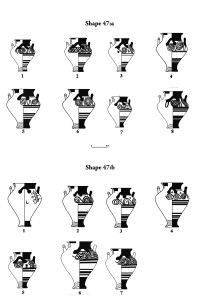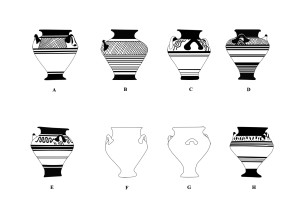Some Considerations on the Connections between Western Peloponnese and Cyprus in the Mycenaean Period
Giampaolo Graziadio
A remarkable group of three-handled jars was manufactured on Cyprus in the 14th century BC under the influence of LH IIIA1 and LH IIIA2 jars FS 44 and FS 45, which suggests that they were the earliest Cypriot vases of Mycenaean inspiration. In this article a comparative analysis between these Cypriot examples and the Mycenaean pottery found in Achaea, Elis and Messenia is carried out. Several morphological affinities between the jars FS 44 and FS 45 with the conical and conical-piriform shapes from these regions and the Cypriot three-handled jars are apparent. There are also additional common features concerning the decoration, such as old-fashioned motifs and the presence of secondary motifs under the handles, which became some of the main decorative elements of the Cypriot three-handled jars. Based on the convergence of this circumstantial evidence, it can be suggested that the influence of the Mycenaean pottery of the western regions of the Peloponnese played an important, although ephemeral, role on Cypriot pottery production during the 14th Century BC. This could be attributed to the substantial development on the Greek mainland, after the destruction of Knossos, of perfumed oil and perfumed ointment production, which led to the widespread export of Mycenaean slow-pouring and unguent containers throughout the Eastern Mediterranean.
Figures

Graziadio G. 2019, Some Considerations on the Connections between Western Peloponnese and Cyprus in the Mycenaean Period, SMEA NS 5, 23-46.







